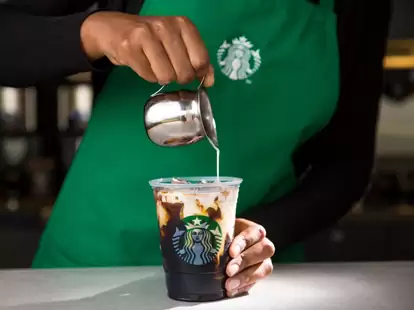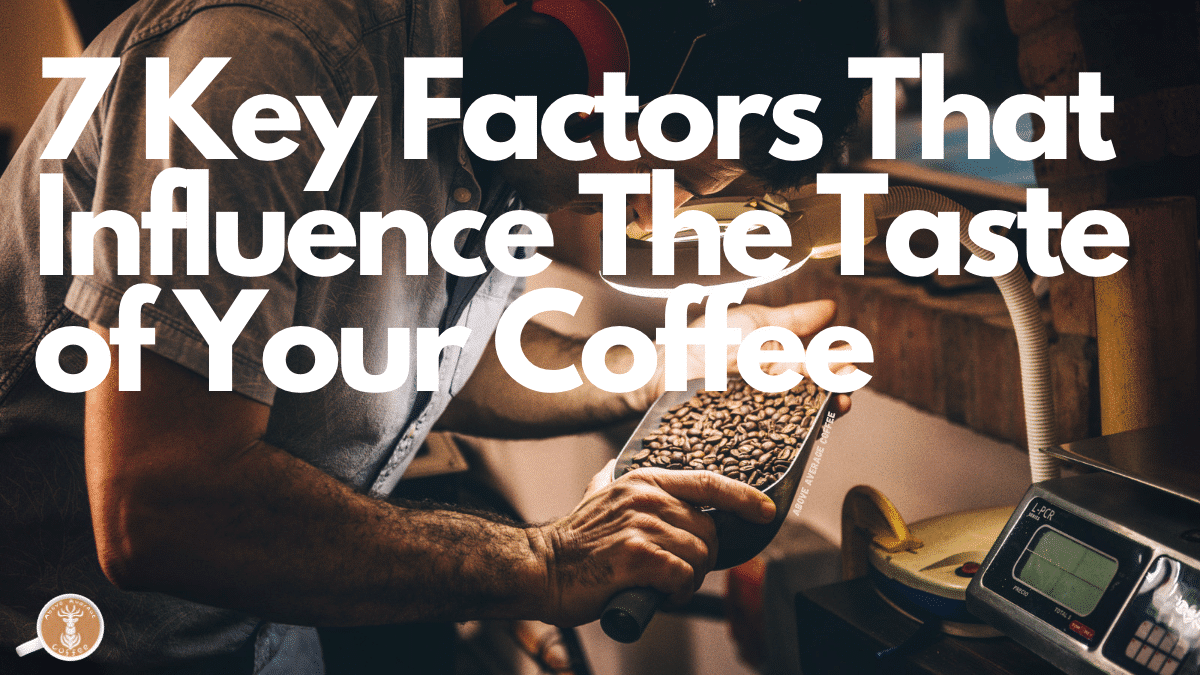Espresso is a brew method that’s all too often left to the barista. It can be a tricky skill to master and requires you to have expensive equipment to hand. Despite this, the rewards you get from being able to make shots of espresso at home are many.
From saving money on drinks in the long run to getting fully immersed in coffee brewing as a hobby, there’s something hugely satisfying about a home-brewed espresso.
I love being able to serve lattes, americano, and all kinds of specialty drinks to friends and family and I feel espresso making has given me a richer insight into the world of coffee.
The first thing that always needs to be considered if you are keen to try making espresso from the comfort of your own home is what is the best type of coffee for espresso?
As long as you get the roast and grind setting just right, then the actual coffee beans used are less essential than it seems, provided they are of good quality and fresh. The beans chosen will add a complexity of flavors and have to suit your own taste preferences. Of course, there’s a lot more to choosing the right coffee for espresso and often people can tend to prefer a darker roast.
In this article, we’re going to cover all the basics of choosing excellent coffee beans for your espresso.
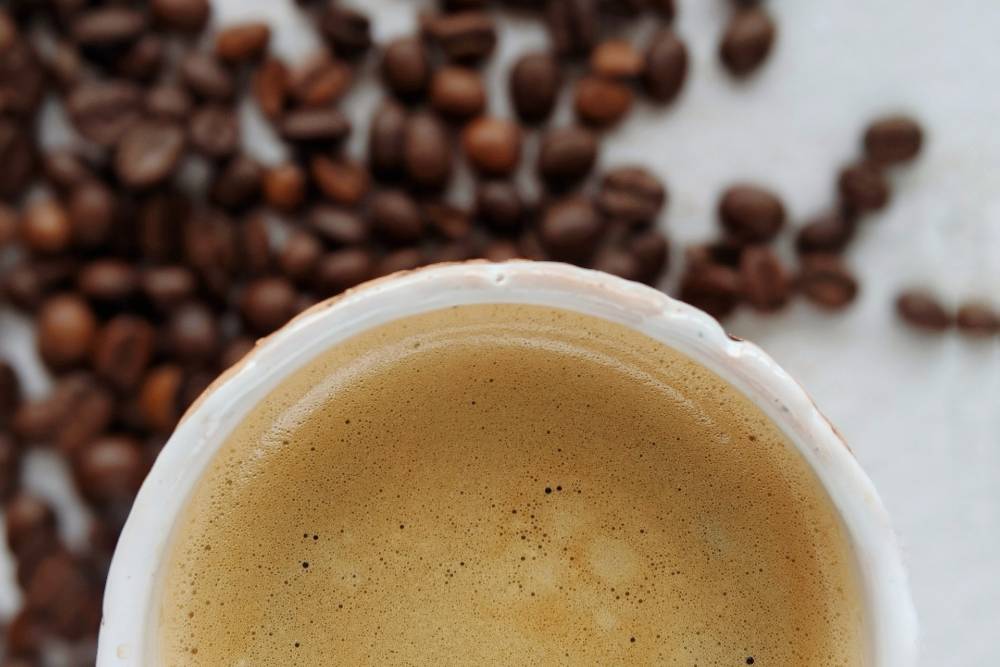
Pre Ground vs Coffee Beans
Pre-ground coffee is very convenient and easy to use but if you’re looking to get the most out of your espresso machine then it isn’t the way to go. Once the coffee is ground up, the increased exposure to oxygen starts an aging process. Over time this causes the coffee to lose some of its scent and flavors.
Even sealed-up pre-ground coffee will lose a fair amount of the richness we all know and love. The best option is to buy whole bean coffee and grind it up at home, just before you are ready to brew.
What Types Of Coffee Bean
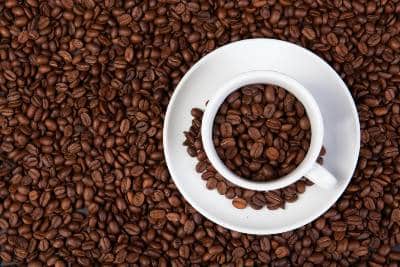
Coffee grows in many areas around the world. There are a number of countries in Africa, South America, and Asia that sit at the correct altitude and have good climate conditions for coffee growing. Although coffee is sometimes sold as ‘espresso beans’ the truth is that it’s actually the roasting process and grind size that makes a coffee more or less suitable for espresso brewing.
The type of coffee beans affects the more subtle flavors and it’s more down to taste preference which beans you choose. Robusta and arabica beans are the two main categories of coffee beans.
Arabica is more tricky to grow so tends to be more expensive. It is lighter, has more subtle flavors, and is generally a bit more acidic. Robusta beans are higher in caffeine and have more bitter notes to them. They are easier to grow so are cheaper to buy.
Rather than single-origin coffee, often espresso coffee is actually a blend of different beans that combines to give a rich and dark flavor. This helps save costs when they are used commercially but you can always buy single-origin espresso beans if you prefer. Blends typically go better when milk is added ie for making lattes, cappuccino, and macchiato.
Here are some examples of coffee beans from various regions around the world and how they fair up for espresso making.
South America
Brazil
Brazilian coffee beans have a fantastic ability to produce darker roasts that don’t contain many bitter notes. This is due to their balanced flavor profile and this helps to make them a good choice for espresso making.
Colombia
If you prefer a milder cup of coffee then a Colombian bean is a good choice. They tend to be medium-bodied and have a mild, fruity acidity. Starbucks relies reasonably heavily on coffee with a Colombian origin.
Africa
Ethiopia
Ethiopian coffee is rich in taste and full-bodied. They leave a bright finish and can vary a lot in price depending on the growing region. When dark roasted, they can make a high-quality espresso.
Kenya
Well known for their rich berry notes, Kenyan coffee beans are aromatic and have a bright, almost wine-like flavor. It’s fairly sweet and suits a medium roast, perfect for lighter brews.
Indonesia
Sumatra
The Indonesian island of Sumatra produces some of the world’s finest premium quality coffees. The beans produce a thick, sweet, creamy cup and are heavy-bodied and earthy. They are low in acidity and make truly delicious and almost syrupy espresso.
Importance Of Roast
A dark roast coffee is typically the key feature of an espresso coffee but this rule is not set in stone. The reason the espresso roast is darker is that this releases more oils from the coffee beans and gives it a richer flavor. Darker roasts tend to be lower in acidity and have more biscuit, dark chocolate, and burnt caramel notes compared to fruity and floral flavors found in light to medium roasts.
You can use a medium roast when making espresso if you’re not a fan of the darker flavors. These roasts will usually produce less crema but can still make delicious espresso if brewed correctly.
When the coffee was roasted is also very important. The date it left the coffee roasters should be around 8-20 days after it was roasted. This gives enough time for the flavor profile to develop but not too long that the coffee starts to go stale.
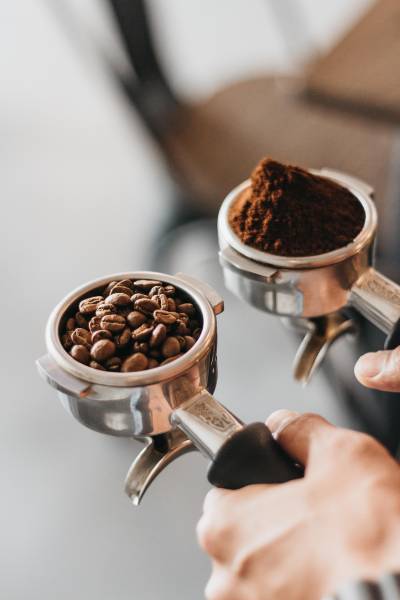
Grind Size
Because espresso is exposed to hot water for such a short period of time, the surface area of the coffee has to be as large as possible to extract all the flavors. This means the coffee needs to be ground to a very fine grind. The coffee grinder should be set close to the finest setting to achieve this.
It’s important to grind coffee to a uniform grind so you don’t end up with big chunks of beans in the mix. If the coffee is uneven then it causes the water to flow in channels through the coffee puck in the portafilter rather than evenly and you end up with an over-extracted, bitter or weak tasting brew.
Blade grinders often result in uneven grinds as there’s no way to control the size that the blades chop the coffee up into. The best option for espresso (or any coffee brewing) is to use a burr grinder as these can be set to grind coffee to an even powder.
Can You Use Espresso Beans For Other Brew Methods
As long as the grind setting is adjusted then yes you can use coffee that’s labeled as espresso blend for other brewing methods. French press, pour-over, drip coffee maker, and cold brew can all be produced with espresso beans rather than regular coffee. The resultant drink will be darker with notes of chocolate and hazelnut.
How Do I Make Espresso At Home
To make great espresso at home, an espresso machine is the best option. These machines can achieve the high pressure necessary to carry out the brewing process and they produce the best espresso with a rich crema on top.
Unfortunately, these machines are also expensive and tricky to get the hang of. There are a couple of options that are more cost-effective, simple to use, and produce a drink that’s very similar to a shot of espresso.
The traditional Italian Moka pot is one option. Originating in Italy it is also known as the stove-top espresso maker. It makes a lovely dark espresso drink using pressure generated by steam.
Another option that’s becoming more and more popular for at-home as well as coffee shop use is the Aeropress. It’s a syringe-like device that uses manual pressure to produce some of the best coffee possible without an espresso machine.
Take-Home
Espresso coffee is really down to the roast and the grind size. The origins of the beans, although important for the complex flavors are not the key factor when choosing espresso coffee. The best thing to do is buy a coffee taster selection so you can try a variety of beans and find out which ones work best for you. This can be a fun thing to do with a friend or your partner and can teach you a lot about which flavors you prefer.
Happy Brewing!


